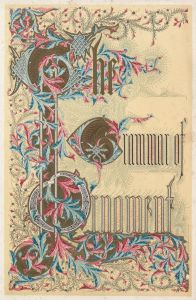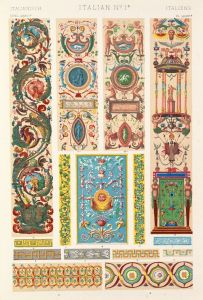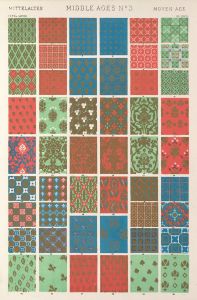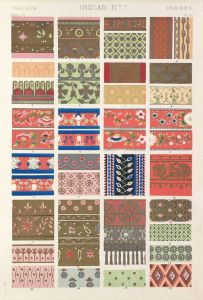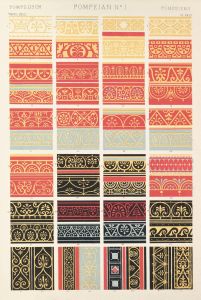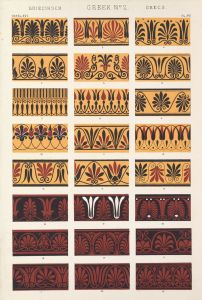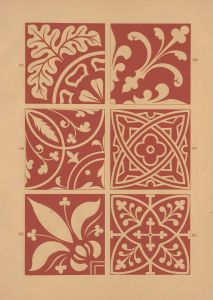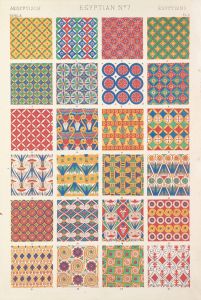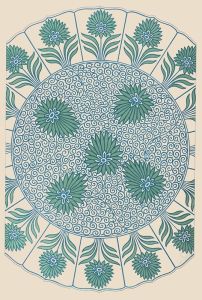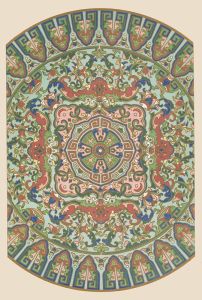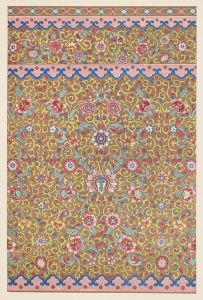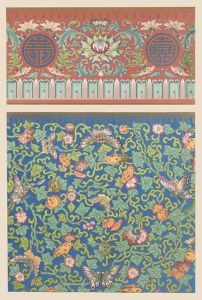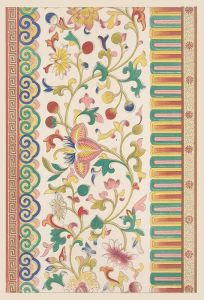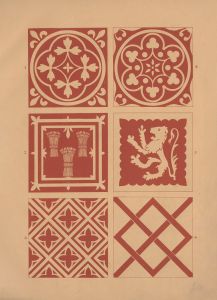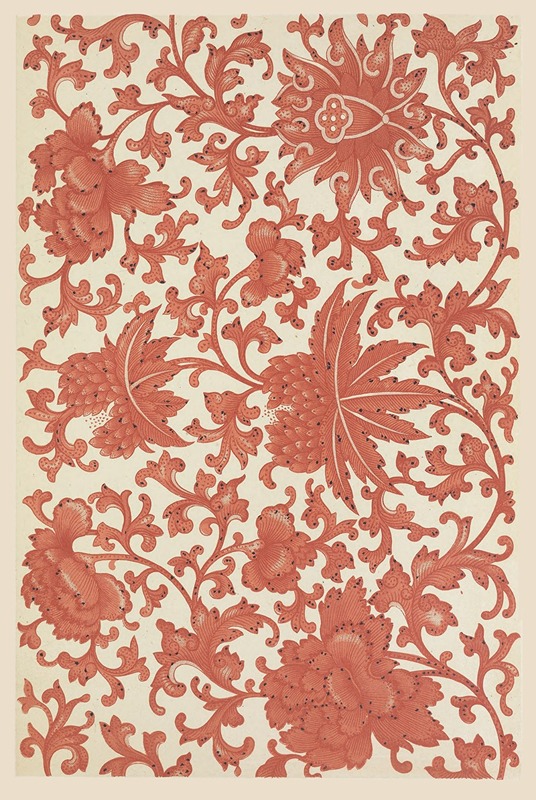
Examples of Chinese ornament, Pl.66
A hand-painted replica of Owen Jones’s masterpiece Examples of Chinese ornament, Pl.66, meticulously crafted by professional artists to capture the true essence of the original. Each piece is created with museum-quality canvas and rare mineral pigments, carefully painted by experienced artists with delicate brushstrokes and rich, layered colors to perfectly recreate the texture of the original artwork. Unlike machine-printed reproductions, this hand-painted version brings the painting to life, infused with the artist’s emotions and skill in every stroke. Whether for personal collection or home decoration, it instantly elevates the artistic atmosphere of any space.
"Examples of Chinese Ornament, Pl.66" is a notable work by Owen Jones, an influential British architect and designer of the 19th century. Jones is best known for his comprehensive work "The Grammar of Ornament," published in 1856, which is a seminal text in the study of design and ornamentation. This book is a collection of design patterns and motifs from various cultures around the world, and it played a significant role in the development of design theory during the Victorian era.
Plate 66, specifically, is part of the section dedicated to Chinese ornamentation. In "The Grammar of Ornament," Jones sought to document and celebrate the rich diversity of decorative arts from different cultures, and his work on Chinese ornament is a testament to his appreciation of its complexity and beauty. The plate showcases a variety of traditional Chinese decorative motifs, which are characterized by their intricate patterns, vibrant colors, and symbolic meanings.
Chinese ornamentation has a long and storied history, deeply rooted in the country's cultural and philosophical traditions. It often features motifs inspired by nature, such as flowers, birds, and mythical creatures like dragons and phoenixes. These designs are not merely decorative; they often carry symbolic meanings, representing concepts such as prosperity, longevity, and harmony. The use of color in Chinese ornamentation is also significant, with specific colors holding particular cultural and symbolic significance. For example, red is often associated with good fortune and joy, while gold symbolizes wealth and prosperity.
Jones's depiction of Chinese ornament in Plate 66 reflects these traditional elements, capturing the essence of Chinese design through detailed illustrations. His work was based on extensive research and observation, as he sought to accurately represent the artistic traditions of China. By including Chinese ornament in his book, Jones not only highlighted the aesthetic value of these designs but also encouraged a greater appreciation and understanding of non-Western art forms among his contemporaries.
"The Grammar of Ornament" was influential in the design world, particularly during the Victorian era, when there was a growing interest in the arts and crafts of other cultures. Jones's work provided designers and architects with a rich source of inspiration, promoting the idea that beauty and creativity could be found in the diverse artistic traditions of the world. His emphasis on studying and respecting the original context of these designs was a progressive approach for his time, advocating for a more inclusive and global perspective on art and design.
In summary, "Examples of Chinese Ornament, Pl.66" by Owen Jones is a significant representation of Chinese decorative art within the broader context of his influential work, "The Grammar of Ornament." Through this plate, Jones not only documented the intricate beauty of Chinese design but also contributed to a greater appreciation and understanding of global artistic traditions. His work remains a valuable resource for those interested in the history and theory of design, reflecting a 19th-century perspective that continues to resonate in contemporary discussions of cross-cultural artistic exchange.





